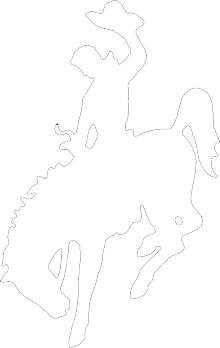Winter Weather Driving Tips
Winter Weather Driving Tips
Before you leave.
- Make sure your vehicle is in good condition. Check that your tires are properly inflated and have proper tread for winter driving. The battery needs to be in good conditions. Make sure the heater works properly. Check the level on your windshield washer fluid and make sure the windshield wipers are in good shape. And see that your tank is full of fuel.
- Have on board the things you may need. Extra blankets, warm clothing, food and water, a first aid kit, and a cellphone will be useful in an emergency. You should also carry a shovel, a flashlight an ice scraper, booster cables, some road salt, and a chain or rope.
- Check road and weather conditions. In Wyoming you can check road conditions by phone at 1-888-WYO-ROAD (1-888-996-7623). Even better, you can look online at wyoroad.info. This website has lots of information about road conditions, including links to maps, web cameras, weather forecasts and a signup to receive updated road information by email or text. WYDOT also has an app, which you can find at Wyoming 511. It provides a little less information than the website but it has a feature that can tell you where you are.
- Consider the reason for your trip. If you don’t really need to travel with bad road conditions, then don’t. Not all trips are equally necessary.
While you are driving.
- Pay attention to road maintenance vehicles. It’s usually not a good idea to pass a snowplow. It’s better to get to your destinations safely than it is not to arrive at all.
- Obey road closures. Roads get closed for a reason. Sometimes the reason is not easily apparent to a traveler. Going through a road closed barrier could result in a very costly fine. WYDOT does provide some very narrow exception where a driver can get permission beforehand. Check out the application at wyoroad.info.
- Adjust your driving to the conditions. Usually this will mean slowing down, but it can also mean that you need to concentrate more intensely than usual on your driving. The road surface condition, visibility and traffic situation all play in to this adjustment.
- Don’t take alternate local road routes suggested by your GPS system when the main roads are closed. The advent of electronic mapping navigation tools in cars has created a new problem that many don’t recognize. When a major roadway is closed, notifications are provided in multiple ways. On the contrary, many local roads, which may be in just as bad a condition, may not be announced as closed. Since the major roadways get the primary attention of road maintenance crews, it is reasonable to expect the secondary and local roadways will actually be in worse condition. Your GPS doesn’t know that.
If you get stranded.
- Stay in your vehicle. Staying in your vehicle makes it much more likely that you will be found.
- Stay Warm. Start it up periodically and run the heater for a few minutes to keep the inside of your car warm. Make sure the exhaust is not blocked with snow when you run it and put the window down just a crack for fresh air (depending on what the wind is like).
- Know where you are. What road are you on? What mile marker are you near? What town or landmark have you passed? What is your GPS location? In Wyoming, load the Wyoming 511 app on your smartphone and use its “Where am I?” feature.
- Let someone know where you are. Call 911. If you can’t make a call because of poor service, try texting. Most counties do not yet have 911 text but some places do. If you can’t get through, try texting a friend and ask them to call for help on your behalf. When you do, make sure to share your location information.
